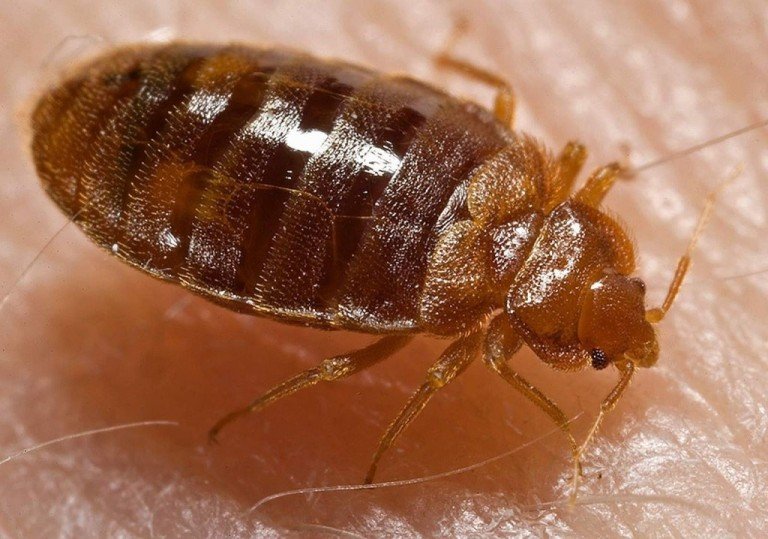Care homes can present a particularly challenging environment when it comes to pest control. The presence of pests in establishments that provide residency and care for vulnerable people, often with pre-existing health problems, can have a serious impact on the lives of all who visit, work or live there.
A pest infestation, be it from rodents, bed bugs, cockroaches, or similar types of pests, can cause untold problems for care home residents. The stress alone is bad enough, but the risk of bites, allergies, and the spread of unpleasant disease is a serious health concern in a care home setting, not least because many care home residents have increased susceptibility to the germs and diseases spread by pests.
The importance of the matter cannot be understated. The health, wellbeing, and even lives of residents are at stake, and if the risks of pest-related infections are not adequately dealt with by a professional pest control company such as Safeguard Pest Control, care home proprietors can face loss of income, prosecution and in severe cases, even closure of the premises.
Let’s take a look at three of the most common types of pest that care homes have to deal with.
Bed Bugs
Care homes provide ideal conditions for bed bugs to thrive. These small, six-legged, blood-sucking creatures typically live in or around beds, though are notoriously good hitchhikers, and can cling to clothes, linen and other fabrics in order to travel to new places where they will then set up home.


They emerge most often at night to feed on the blood of people while they’re sleeping. Their bite can cause severe irritation and itching, leaving a wound that also carries the risk of secondary infection. A more severe reaction can occur if the person bitten suffers an allergic reaction. Beds with a high level of infestation also present a risk of anaemia for the human host sleeping in it. Due to the very nature of care homes, where residents receive regular visitors and a number of different care workers to their rooms, it’s very easy for bed bugs to hitchhike from one place to another.
As such, an infestation can get out of control very quickly if it is not dealt with in a timely fashion. One sign of infestation is residents reporting that they are being bitten. If this happens, care home staff should look for small, dark stains on mattresses and bed linen. Egg shells and case skins in and around beds are also signs of an infestation. If any of these signs are detected, you should contact a professional pest control company immediately to conduct a thorough search and inspection and to take remedial action.
Cockroaches
Cockroaches pose substantial risk to care home residents. They are carriers of dangerous bacteria, including Salmonella and E. coli, and can be an allergy trigger as well. The saliva, faces, and shed body parts of cockroaches aggravate both asthma and allergies.
In an environment where residents often have weaker immune systems, it’s of vital importance to ensure adequate cockroach pest control practices are in place to prevent potential health risks.
Like bed bugs, cockroaches are most active after dark, emerging from their hiding places where they can survive for a month without food and two weeks without water. As cockroaches forage around, they can contaminate anything they come into contact with including food, surfaces, utensils, medical equipment, open wounds and bed sores. These infestations must be controlled.
If any resident, visitor or member of staff spots a cockroach, you can be almost certain that there will others nearby. However, even if you don’t see the creatures with your own eyes, there are number of other signs to look out for. The first is an unusual smell. A lingering, unpleasant odour is an indication of cockroach infestation. The second is droppings. These may be black and cylindrical if water is scarce, or present more like brown smear marks where water is in good supply. Finally, there is the shed skins of the cockroach.
If any of the above signs are reported, it’s essential that a professional pest control company is called in to deal with the problem to minimise the risks of cockroach-related infections spreading throughout your care home.
Rodents
Mice and rats can have no place in care homes whatsoever. Riddled with a wide range of disease-causing organisms, including bacteria and viruses, if there are rodents in your care home, you have a serious health hazard to contend with.
Rats and mice act as reservoirs of disease via their parasites, such as fleas, ticks, lice and mites. Due to the fact they are mobile and inquisitive mammals, these rodents will explore your building looking for food and shelter, carrying their parasites with them, and contaminating everything they come into contact with.
This causes a huge risk for the vulnerable residents in your care home, all of whom will be at risk of diseases including salmonellosis, Weil’s disease, and hantavirus.
Signs of infestation include noise, gnaw marks on food and packaging, smudge marks against skirting boards and walls, droppings and mouse and rat holes in the building’s structure.
If anyone spots a mouse or rat, or sees any of the above signs of infestation, you must act quickly, and contact a professional pest control company, who will implement an immediate treatment plan to mitigate the risk of serious pest-related infections and spread of disease taking hold in your care home.
Safeguard Pest Control – Pest Control Services for Care Homes
Care homes have a statutory responsibility to take appropriate pest control measures for the protection and safety of the vulnerable people in their care. Safeguard Pest Control can help you. With over 30 years’ experience in the field, Safeguard is expert in monitoring, preventing, and controlling pests. We provide innovative, bespoke, and discreet solutions which help prevent the cross contamination and secondary infections which pests can cause.
Please, get in touch to organise a free site survey today.

